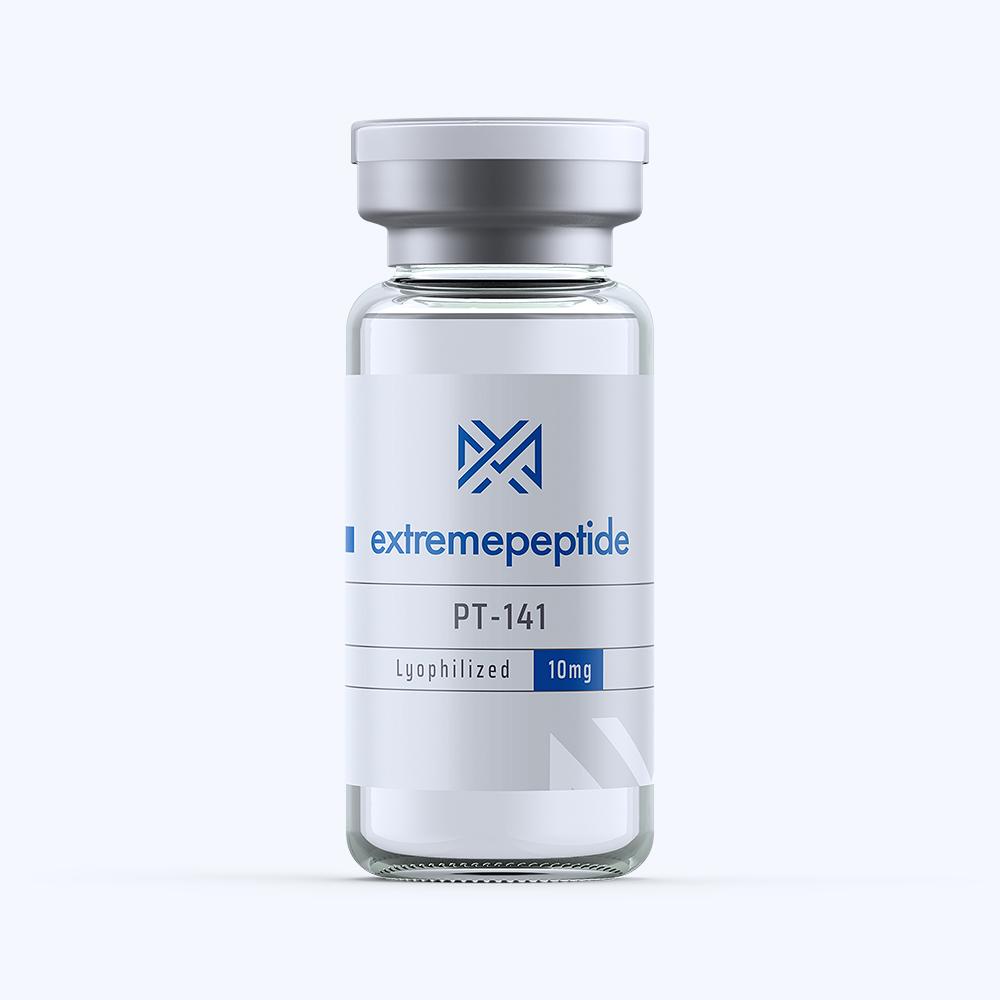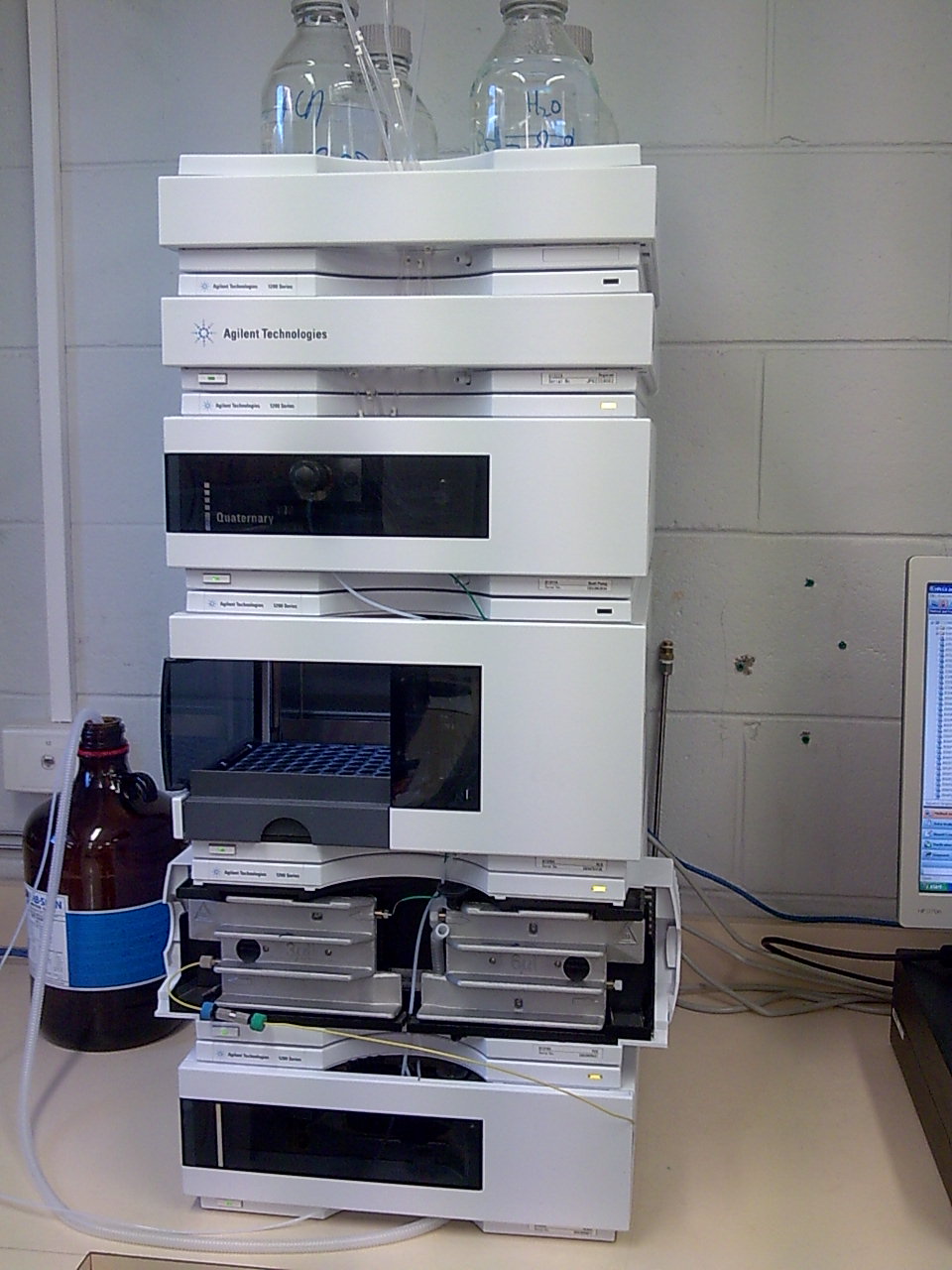 PT-141 (Bremelanotide) is a research cyclic peptide whose scientific study on animal test subjects is primarily tied to potentially positive effects relating to hemorrhagic shock and reperfusion injury. It contains a molecular mass of 1025.2, and carries a molecular formula of C50H68N14O10. It also has a half-life of 120 minutes.
PT-141 (Bremelanotide) is a research cyclic peptide whose scientific study on animal test subjects is primarily tied to potentially positive effects relating to hemorrhagic shock and reperfusion injury. It contains a molecular mass of 1025.2, and carries a molecular formula of C50H68N14O10. It also has a half-life of 120 minutes.
The Scientific Process of PT-141 Bremelanotide
PT-141 Bremelanotide’s operational mechanics has been shown to be linked to the central nervous system. On a more specific level, according to scientific study based on animal test subjects, PT-141 Bremelanotide has been shown to activate melanocortin receptors MC-3R and MC-4R. This action of activation has allowed scientific study on animal test subject to determine that the peptide engages in this way as a means to inhibit and control specific signals which are transmitted from the brain to various components of the nervous system that relate to inflammation and blood flow restriction. When these particular receptors are triggered, the result is a modulation of inflammation and a limit of blood flow restrictions as they relate to triggers that are linked to ischemic conditions.
Ultimately, this sense of control has enabled scientific study based on animal test subjects to hone in on the peptide’s purpose. Essentially, they said this function was twofold. Firstly, the peptide can be shown to curb bodily irritation which can be brought upon by various pathogens and irritants. Secondly, the peptide can minimize the damage or dysfunction of blood vessels and other associated tissues, up to and including the damage that could result from an ischemic episode.
Additional scientific study that has been based on animal test subjects has determined that PT-141 Bremelanotide’s course of action is through the central nervous system, as opposed to directly expressing itself through the bloodstream.
PT-141 Bremelanotide and Hemorrhagic Shock
One of the main focuses of scientific study based on animal test subjects is determining the link between PT-141 Bremelanotide and the serious condition of hemorrhagic shock. Essentially, the condition itself is marked by lower tissue perfusion, which over time turns in an inadequate delivery of oxygen an nutrients that are vital for cellular function. The condition is split into four classes: neurogenic; cardiogeneic; hypovolemic; and vasogenic – better known as septic. Overall, it is a very tricky ailment to deal with when it’s observed on a cellular level, because no two cells will express the exact presentation of shock identically.
Scientific study based on anima test subjects has shown that PT-141 Bremelanotide’s design is to stimulate the neural reflects as a method to regulate blood flow through organs that would otherwise slow down o even shut down as a result of hemorrhagic shock. This particular manner of stimulation can be manifested in several ways, such as:
- A boosted heart rate
- Vasocsontriction
- A redistribution of blood flow away from organs that an animal test subject would deem to be unnecessary for ultimate survival, such as the skin or the kidneys
PT-141 Bremelanotide and Reperfusion Injury
Another main area of scientific study that has been based on animal test subjects is determining a link between PT-141 Bremelanotide and its conceived ability to lessen the effects of reperfusion injury. In essence, a reperfusion injury refers to the type of tissue damage that could be caused in the wake of an ischemic episode, such as a stroke or angina pectoris. When this condition happens, a process that is normally considered to be important – that is, the circulation of blood flow through an organ – actually results in oxidative damage and inflammation via the condition of oxidative stress.
It has been determined via scientific study on animal test subjects that PT-141 Bremelanotide can work on a neurological level in order to lower the inhibitions that would otherwise be linked to the restriction of blood flow to tissues as a result of the ischemic cascade. The ultimate result of this process would translate to a lowering or even a blockage of any and all resultant damage that may otherwise happen from blood flow limitation to potentially affected areas.
Other Focuses of Study
While the studies between PT-141 Bremelanotide and its respective links to hemorrhagic shock and reperfusion injury are the most prominent fields of study regarding the peptide, it should be noted that some studies in relation to the peptide has been focused on discovering a link between it and sexual dysfunction in both male and female animal test subjects.
Sources:
We have PT-141 available for purchase in our store:
You can read more essays we have prepared on this peptide by clicking the links below:
PDF View/Download
 One of the more important aspects of peptides that are used for scientific study on animal test subjects involves the process of determining the effectiveness of the materials involved in conducting the research. Specifically, it is imperative that the purity of the peptides involved is scrutinized, especially in terms of long-term research projects. If a peptide is at or close to 100% in its purity level, the end results of the research will be consistent. If a peptide does not approach these high numbers of purity, a higher rate of variability can be introduced into the research phase, thus causing a potential disruption to the integrity of the studies being conducted.
One of the more important aspects of peptides that are used for scientific study on animal test subjects involves the process of determining the effectiveness of the materials involved in conducting the research. Specifically, it is imperative that the purity of the peptides involved is scrutinized, especially in terms of long-term research projects. If a peptide is at or close to 100% in its purity level, the end results of the research will be consistent. If a peptide does not approach these high numbers of purity, a higher rate of variability can be introduced into the research phase, thus causing a potential disruption to the integrity of the studies being conducted.

 PT-141 (Bremelanotide) is a research cyclic peptide whose scientific study on animal test subjects is primarily tied to potentially positive effects relating to hemorrhagic shock and reperfusion injury. It contains a molecular mass of 1025.2, and carries a molecular formula of C50H68N14O10. It also has a half-life of 120 minutes.
PT-141 (Bremelanotide) is a research cyclic peptide whose scientific study on animal test subjects is primarily tied to potentially positive effects relating to hemorrhagic shock and reperfusion injury. It contains a molecular mass of 1025.2, and carries a molecular formula of C50H68N14O10. It also has a half-life of 120 minutes.